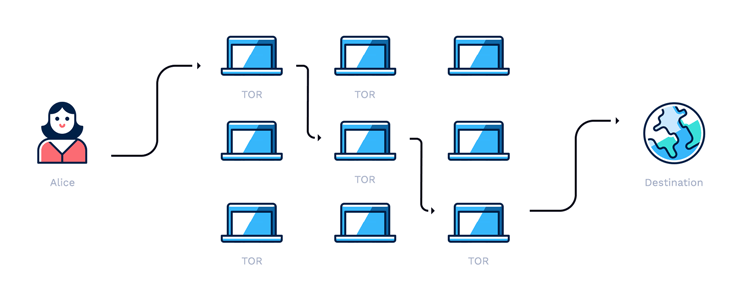

See later for a discussion on the security implications of this. Data enters and leaves this exit node unencrypted by default, and can be “seen” by the operator of the exit node. The last node in the chain, the one that connects directly to the wider internet, is called an “exit node”. Tor relay circuits are randomly reset every 10 minutes so that your actions cannot be linked to earlier actions.Įach node is run by a volunteer, and therefore the more volunteers there are, the more secure the whole Tor network is. It is designed so that no-one can discover your true identity, and (if you connect to a secure website) no-one can access your data. The real beauty of the Tor system is that you do not have to trust anyone. This should mean that at no point can anyone know the whole path between your computer and the website you are trying to connect to (even if some nodes along the path nodes are controlled by malicious entities).Each node is only aware of the IP addresses “in front” of it, and the IP address of the node “behind” it.The data is re-encrypted multiple times (each time it passes through a node).These nodes can be located anywhere in the world.Your internet connection is routed through at least 3 random “nodes” (volunteer run servers).The name Tor originated as an acronym for The Onion Router, and refers to the way in which data encryption is layered.
VPN TOR FOR MAC FULL
For a full list of Tor’s sponsors, please see here How Tor works Sensitive to criticism, however, Tor has also made substantial efforts to widen its funding base.
VPN TOR FOR MAC CODE
This is singularly peculiar, because other branches of the US government routinely spend large amounts of money, time, and resources trying to compromise the Tor network!ĭespite this somewhat bizarre situation, Tor remains completely independent, and its open source code remains among the most thoroughly and regularly audited in the world. To this end, the Project continues to receive substantial funding from the US government.
VPN TOR FOR MAC FREE
In a curious twist of fate, the Tor Project was developed in the mid-1990s by the United States Naval Research Laboratory, in order to assist people living under oppressive regimes to bypass censorship and exercise free speech. Tor is 100% free and open source, although it does accept donations. Thanks to being free, Tor can also make quite a handy anti-censorship tool, but many repressive governments go to great lengths to counter this by blocking access to the network (to varying degrees of success). Tor, on the other hand, is a vital tool for that tiny subset of internet users who really require the maximum possible anonymity. VPN does, however, provide a much better day-to-day internet experience, and because of this, is a much more flexible general-purpose privacy tool. Using a VPN can provide a high degree of privacy, but should never be regarded as anonymous (because your VPN provider will always know your true IP address). Tor provides a very high degree of true anonymity, but at the cost of day-to-day internet usability. Read my Tor Network Review to find out more! There are core differences between the technologies, however, that in practical terms make them useful in quite different ways. In some ways, then, it serves a similar purpose to using a VPN. The Tor network aims to provide users with truly anonymous internet access.


 0 kommentar(er)
0 kommentar(er)
